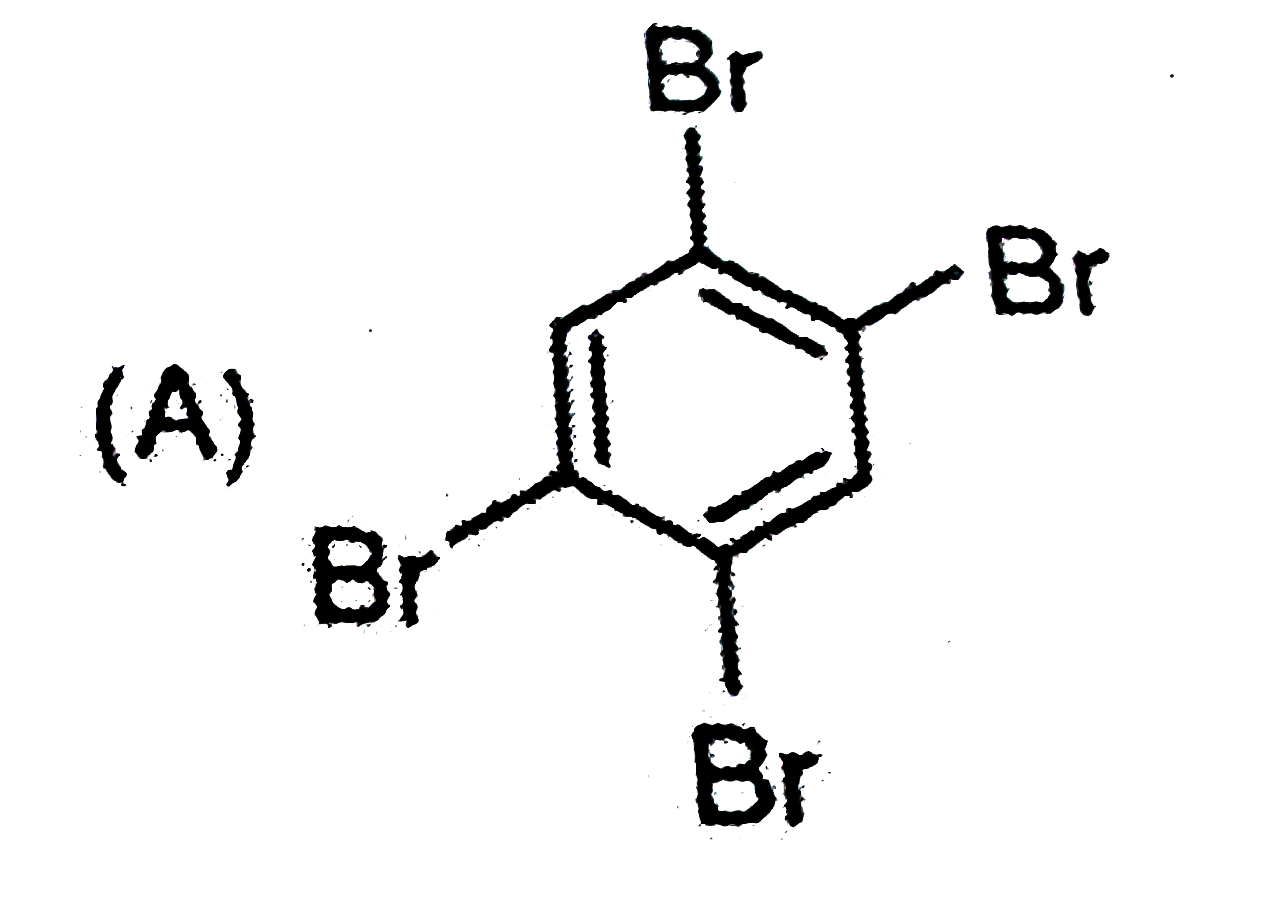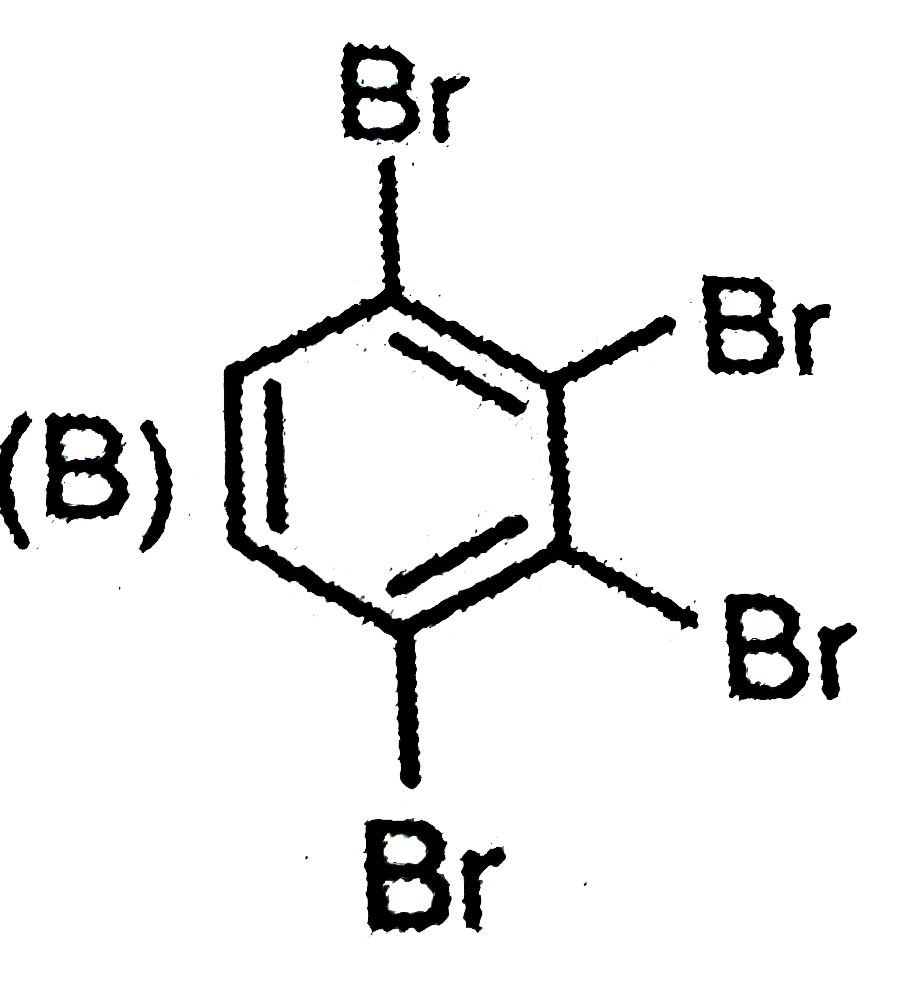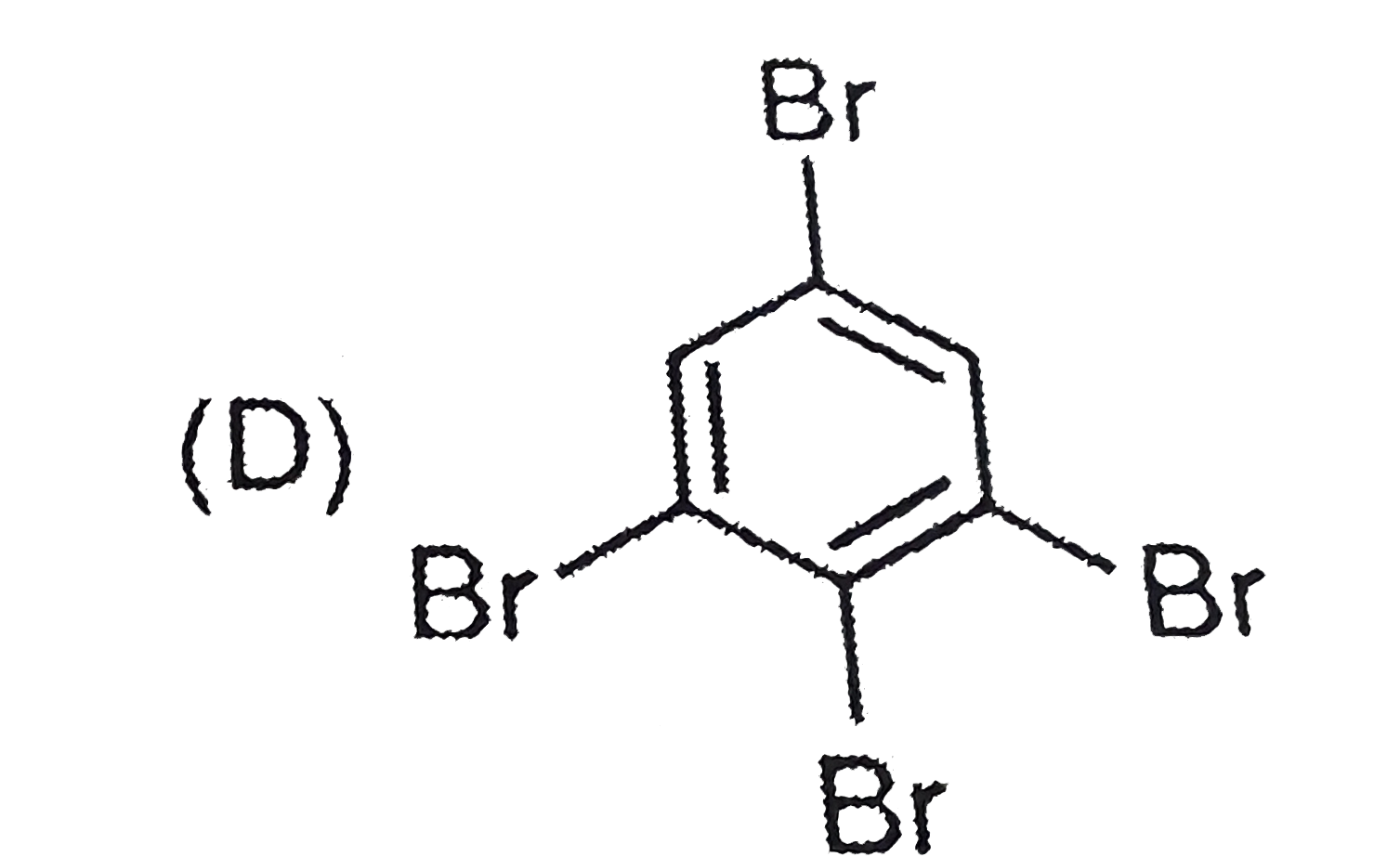Aniline reacts with mixed acid conc. HNO3 and conc. H2SO4 at 288 K to give P (51 %), Q (47%) and R (2%). The major product(s) of the following reaction sequence is (are)




The correct Answer is:D
To solve the problem, we need to analyze the reaction of aniline with a mixture of concentrated nitric acid (HNO₃) and concentrated sulfuric acid (H₂SO₄) at 288 K. This mixture is known as a nitrating mixture, and it will lead to the formation of different nitroaniline products.
1. Identify the Reactants:
- The reactant is aniline (C₆H₅NH₂), which contains an amino group (-NH₂) attached to a benzene ring.
2. Understand the Nitration Process:
- When aniline is treated with the nitrating mixture, nitration can occur at three positions on the benzene ring: ortho (2-position), meta (3-position), and para (4-position) relative to the amino group.
3. Predict the Products:
- The products formed will be:
- P: Ortho-nitroaniline (major product, 51%)
- Q: Para-nitroaniline (second major product, 47%)
- R: Meta-nitroaniline (minor product, 2%)
4. Analyze the Product Distribution:
- The ortho product is favored due to the electron-donating effect of the amino group, which increases the electron density on the ortho and para positions. However, steric hindrance makes the ortho product less stable than the para product, leading to a significant amount of para product as well.
5. Identify the Major Product:
- The major product from the nitration of aniline is ortho-nitroaniline (P, 51%).
6. Further Reactions with Compound R:
- The question implies further reactions with the product R (meta-nitroaniline). The sequence of reactions involves:
- Treating R with acetic anhydride (to form an acetanilide derivative).
- Bromination of the acetanilide derivative.
- Acid hydrolysis to regenerate the amine.
- Formation of a diazonium salt and subsequent reactions leading to a brominated product.
7. Final Product Identification:
- After the sequence of reactions, the final product is a brominated derivative of aniline, specifically a dibrominated compound.
8. Conclusion:
- The major product of the entire reaction sequence is identified as the dibrominated aniline derivative, which corresponds to option D in the given choices.
- The reactant is aniline (C₆H₅NH₂), which contains an amino group (-NH₂) attached to a benzene ring.
- When aniline is treated with the nitrating mixture, nitration can occur at three positions on the benzene ring: ortho (2-position), meta (3-position), and para (4-position) relative to the amino group.
- The products formed will be:
- P: Ortho-nitroaniline (major product, 51%)
- Q: Para-nitroaniline (second major product, 47%)
- R: Meta-nitroaniline (minor product, 2%)
- The ortho product is favored due to the electron-donating effect of the amino group, which increases the electron density on the ortho and para positions. However, steric hindrance makes the ortho product less stable than the para product, leading to a significant amount of para product as well.
- The major product from the nitration of aniline is ortho-nitroaniline (P, 51%).
- The question implies further reactions with the product R (meta-nitroaniline). The sequence of reactions involves:
- Treating R with acetic anhydride (to form an acetanilide derivative).
- Bromination of the acetanilide derivative.
- Acid hydrolysis to regenerate the amine.
- Formation of a diazonium salt and subsequent reactions leading to a brominated product.
- After the sequence of reactions, the final product is a brominated derivative of aniline, specifically a dibrominated compound.
- The major product of the entire reaction sequence is identified as the dibrominated aniline derivative, which corresponds to option D in the given choices.
Topper's Solved these Questions
- AROMATIC COMPOUNDS BOOK - RESONANCE ENGLISHCHAPTER - AROMATIC COMPOUNDS EXERCISE - PART-II JEE MAIN
19 Videos
- AROMATIC COMPOUNDS BOOK - RESONANCE ENGLISHCHAPTER - AROMATIC COMPOUNDS EXERCISE - JEE(MAIN) ONLINE PROBLEM
16 Videos
- AROMATIC COMPOUNDS BOOK - RESONANCE ENGLISHCHAPTER - AROMATIC COMPOUNDS EXERCISE - PART IV- COMPREHENSION
13 Videos
- ATOMIC STRUCTUREBOOK - RESONANCE ENGLISHCHAPTER - ATOMIC STRUCTUREEXERCISE - ORGANIC CHEMISTRY(Fundamental Concept )
16 Videos
Similar Questions
Knowledge Check
Phenol reacts with conc. HNO3 in the presence of conc. H2SO4 to give :
Ameta nitrophenolBortho nitrophenolCortho and para nitrophenolDpicric acid
Benzene on treatment with a mixture of conc. HNO3 and con. H2SO4 at 373K gives
View SolutionAddition of conc. HNO3 to conc. H2SO4 gives
View SolutionConc. HNO3+H2SO4 mixture gives
View SolutionSulphonation of phenol with conc. H2SO4 at 288-298 K gives
View SolutionNitrating mixture is obtained by mixing conc. HNO3and conc H2SO4. Role of H2SO4 in nitration is
View SolutionOxalic acid on treatment with conc. H2SO4 gives
View SolutionIn the nitration of benzene with conc. HNO3 and conc H2SO4 the electrophile acting group is
View Solution
